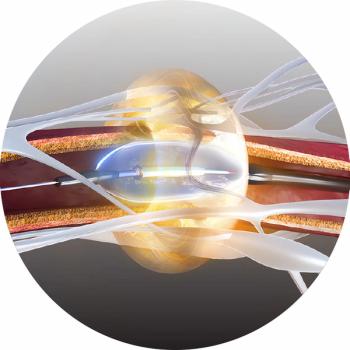
Contrast saves ultrasound in FAST fading ER role
Technique could provide safe, accurate diagnosis, reducing costly, unnecessary CT trauma scanning
Recent clinical and marketing data have proclaimed that the focused assessment with sonography for trauma (FAST) protocol has yielded to CT for the diagnosis of blunt abdominal injuries in the emergency room. Findings from European researchers using contrast-enhanced sonography, however, suggest the modality could eventually reclaim its place.
FAST has been the primary screening examination for blunt abdominal trauma in Asia, Europe, and, to a lesser extent, the U.S. and Canada for several years. Protocols for unstable patients who cannot undergo CT rely upon suspected links between solid organ injuries and free fluid, namely hemoperitoneum. Recent studies, however, have shown that more than one-third of solid organ lesions can occur without hemoperitoneum, diminishing ultrasound's value. In the meantime, the use of multislice CT scanners in the ER has boomed at the expense of conventional sonography.
CE sonography could restore FAST's prominence in this setting, according to Dr. Massimo Valentino, an ER radiologist at the University of Bologna's S. Orsola-Malpighi Hospital.
"My physicians were a little skeptical at first and continued to place more importance on CT. But after some cases, they changed their attitude completely, and now they greatly appreciate this tool," Valentino said.
Valentino and colleagues performed standard unenhanced sonography, CE sonography, and CT on 69 nonconsecutive hemodynamically stable patients during a two-year period. All patients presented with blunt abdominal trauma and had strong clinical indications of abdominal organ lesions. The investigators found CE sonography more sensitive than conventional sonography and almost as sensitive as CT in the detection of traumatic abdominal solid organ injuries.
CE sonography provided outstanding injury resolution, especially in the spleen and other subtle lesions, which was relevant for surgery evaluation. It also showed angiographic findings that used to be the exclusive territory of CT, such as contrast medium extravasation, parenchymal infarction, and vascular pedicle avulsion (AJR 2006 May;186[5]:1361-1367).
The data validate previous findings showing that CE sonography is more accurate and informative than standard sonography and that it correlates better with CT. Although CE sonography cannot completely replace CT, it can reduce its use as a screening method, the investigators concluded.
The problem is that ultrasound contrast agents for radiology use beyond the heart still await FDA approval. While momentum has increased in the last year to approve CE ultrasound, its status remains uncertain. Nevertheless, U.S. advocates hold out hope.
"Early studies are showing a great increase in accuracy for diagnosing and ruling out solid organ injury without the presence of free fluid in the abdomen. If realized to its full potential, the need to perform an abdominal CT in trauma could be virtually eliminated," said ER physician Dr. Michael Blaivas, associate editor of Academic Emergency Medicine.
Newsletter
Stay at the forefront of radiology with the Diagnostic Imaging newsletter, delivering the latest news, clinical insights, and imaging advancements for today’s radiologists.


























